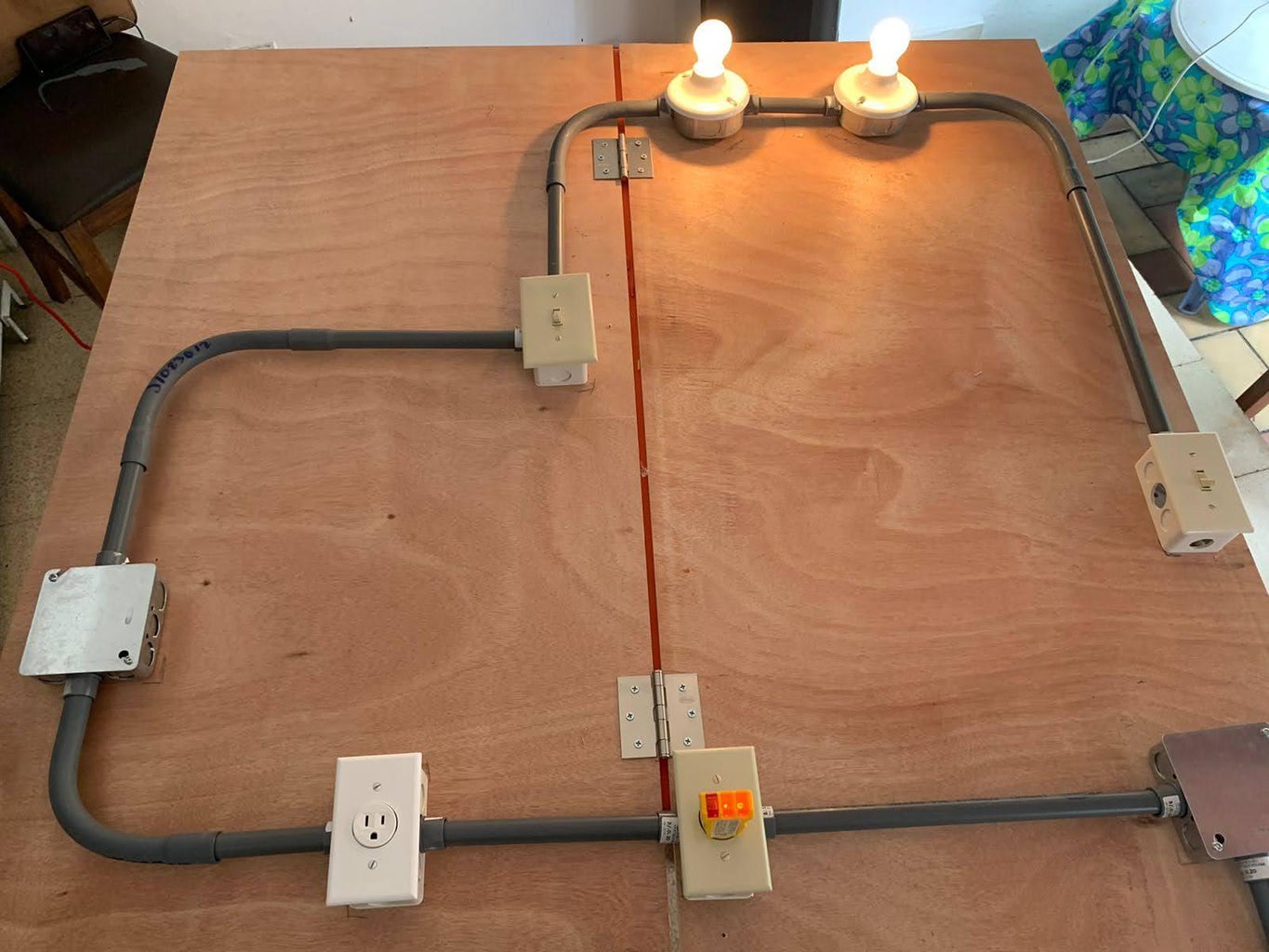The Ultimate Guide to Electric Installment: Tips and Strategies for a Safe and Effective Home Circuitry System
In the world of home upkeep, couple of facets are as crucial yet often neglected as the electrical circuitry system. By discovering the subtleties of electric safety actions and energy-saving techniques, this extensive overview will certainly shed light on the complexities of home circuitry, equipping individuals to take cost of their family's electrical infrastructure.
Comprehending Electrical Precaution
To make certain the safety and security of both people and home, understanding and implementing proper electrical safety and security actions is critical in any type of home circuitry task. Electrical energy is an effective force that can be dangerous otherwise handled with care. Among the essential precaution is making sure that all electrical job is carried out by certified experts that adhere to regional building regulations and policies. It is crucial to perform a complete assessment of the electrical system before starting any type of wiring task to recognize prospective dangers or issues that require to be addressed.
Furthermore, using the suitable devices and devices is important for maintaining safety and security throughout electrical installments. Protected handwear covers, voltage testers, and protective glasses are a few of the basic safety and security gear that must be used to avoid electric shocks or crashes. It is also essential to de-energize circuits before working with them and to label all circuits and breakers clearly to avoid confusion.

Necessary Devices for Home Circuitry
Making certain the correct execution of electrical safety procedures in home circuitry projects entails utilizing a specific set of important tools made to promote the installation procedure effectively and safely. Some of the key tools needed for home wiring jobs include a voltage tester for inspecting real-time wires, cable strippers for removing insulation from cables, a cord cutter for exactly cutting cables to size, a screwdriver set for securing electric elements, electric tape for insulation and protecting links, a cable television ripper for stripping wire sheathing, and a multimeter for gauging voltage, current, and resistance.
Step-by-Step Electrical Installation Guide
Starting an electrical setup job requires thorough preparation and adherence to safety and security guidelines. Before starting any kind of work, guarantee you have an in-depth strategy laying out the design of the electric system, including the positioning of electrical outlets, switches, and fixtures. Take into consideration the power requirements of each device to identify the suitable cable gauge and circuit breaker sizes.
The very first step in the setup process is to shut down the power supply to the location where you will be functioning. Make use of a voltage tester to validate that the circuits are de-energized prior to touching any kind of cords. Next, carefully eliminate existing fixtures or electrical outlets and separate the cables.
When installing brand-new circuitry, run cable televisions through walls and ceilings, protecting them in location with ideal installations. Adhere to regional building ordinance and maker directions for proper wire setup and connections. BRE Automation Australia. Make certain to identify wires for easy identification and future upkeep

Troubleshooting Common Circuitry Issues
Having click over here completed the installation process as described in the previous subtopic, troubleshooting common electrical wiring concerns is an important ability for making sure the safety and security and performance of your electric system. One common concern is a stumbled circuit breaker, typically brought on by overloaded circuits or a brief circuit. To fix this, locate the breaker panel, recognize the tripped breaker by looking for the one not completely in the "on" position, and reset it by flipping it completely to "off" and after that back to "on." One more common problem is a defective outlet, defined by no power or recurring power supply. Ensure the outlet is not managed by a switch, after that use a voltage tester to examine for power. If there is no power, shut off the circuit, examine the circuitry connections for any type of loose or damaged wires, and change the electrical outlet if required. Constantly flickering lights can suggest loose wiring links or an overloaded circuit. To resolve this, check and tighten up all cord connections in the affected fixtures and switches and redistribute the lots on the circuit to stabilize the electrical need. On a regular basis inspecting and immediately addressing these usual circuitry concerns will preserve the safety and effectiveness of your home electric system.
Tips for Energy-Efficient Electrical Systems
For ideal power performance in electrical systems, implementing wise methods and making use of energy-saving modern technologies is extremely important. One essential idea for accomplishing an energy-efficient electrical system is to upgrade to LED illumination. LED bulbs eat substantially much less power than conventional incandescent light bulbs and have a longer lifespan, making them an economical choice in the lengthy run. Furthermore, installing programmable thermostats can help control home heating and cooling systems, reducing power waste when nobody is home. An additional strategy is to purchase energy-efficient home appliances that are ENERGY STAR certified, ensuring they meet high requirements for power effectiveness. Appropriate insulation and securing of windows, doors, and electric outlets can likewise view avoid power loss, eventually minimizing the workload on electric systems. Think about incorporating renewable power sources like solar panels to more decrease dependence on typical power grids. By including these energy-efficient pointers and innovations, home owners can not only save money on their electrical power bills however also lower their environmental effect.
Conclusion
To conclude, applying proper precaution, using crucial tools, adhering to a step-by-step installment overview, troubleshooting common see this issues, and incorporating energy-efficient ideas are critical for a risk-free and efficient home wiring system. By sticking to these practices, home owners can guarantee the long life and capability of their electric installations. It is necessary to focus on safety and security and performance when it pertains to electrical operate in order to avoid prospective threats and to preserve a reputable electric system in the home.